XML Master Professional Database Administrator I10-003 Exam Practice Test
Select the correct result of executing the following [XQuery] on [example xml] referenced in a separate window.
[XQuery]
{fn:doc("example.xml")/example/record/data[@condition="good"][2]}
{fn:doc("example.xml")/example/record/data[2][@condition="good"]}
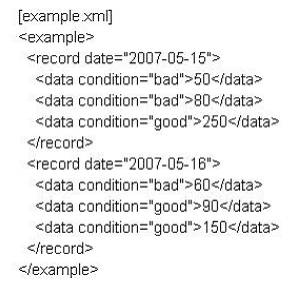
Answer : D
Four separate operating requirements and four individual storage management methods for XML document data are listed below. Considering the general characteristics, which individual management method ([Management Methods]) combines most optimally with which requirement ([Operating Requirements])?
[Operating Requirements]
1. Retrieve a portion of the XML document according to values in the XML document
2. Identify the XML document by unique values, and retrieve the entire XML document
3. Perform aggregation and statistical calculations of the values in the XML document
4. Continuously check the data types for the values in the XML document, and search through data using queries on the XML document
[Management Methods]
A) XML document file (text file) management via file system
B) Management via RDB (relational database), and program for storing data from an XML document into the RDB (assume the RDB does not maintain an XML document tree structure)
C) Management via XMLDB, using XML Schema definitions
D) Management via XMLDB, without using XML Schema definitions
Answer : A
Assume that you wish to create an XML Schema document against which [XML Document] (referenced in a separate window) is valid.
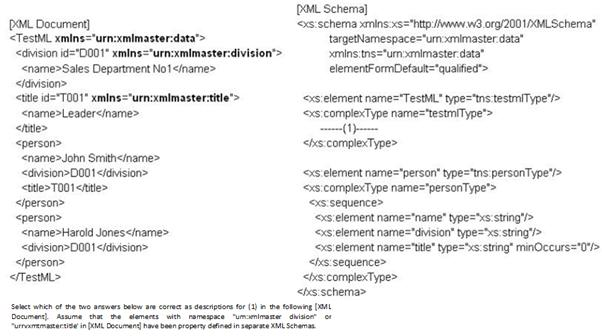
Answer : B, D
Assume that a certain XMLDB requires disk capacity in excess of the size of an XML document when storing the XML document to accommodate XML node information and other information (such as management considerations, etc.)
The following describes the capacity needed:
When eliminating ignorable whitespace in the XML document 1.5 times the XML document file size. When not eliminating ignorable whitespace in the XML document 2.0 times the XML document file size. At the initial stage, the total size of the XML document files to be stored is 1GB. At the operating stage, repeated additions and deletions of XML documents will result in a projected disk requirement of plus or minus 10% compared to the prior year. Assume that the disk size configured at initial stage cannot be changed for two years. The required disk capacity will be calculated according to these conditions; however, to provide a safety margin, the decision has been made to set aside the equivalent of twice the maximum required disk capacity as calculated above. Select the value representing the required disk capacity when ignorable whitespace is not eliminated from the XML document. Do not consider any facts or conditions other than those given above.
Answer : D
Select the correct result of executing the [XQuery] on [example xml] referenced in a separate window.
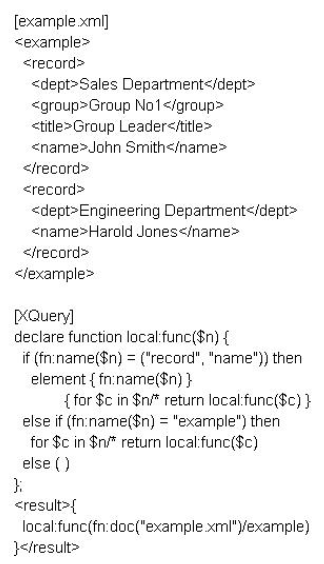
Answer : A
Select which of the following is not a correct description regarding dynamic context defined by XQuery 1.0.
Answer : D
See separate window.
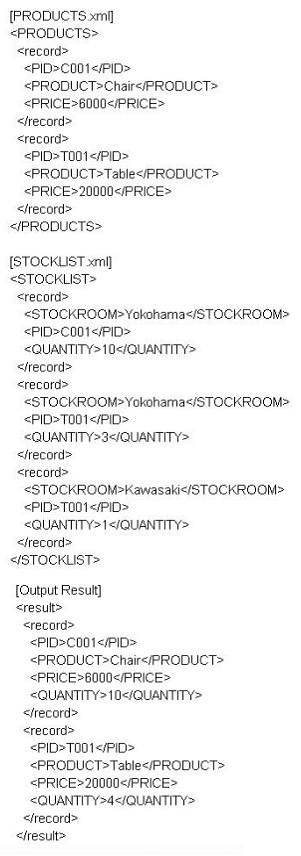
[PRODUCTS xml] (separate window) and [STOCKLIST.xml] (separate window) are output in XML format from RDB (relational database) data.
Assume that you wish to use an XOuery processor to get [Output Result] (separate window) from this XML data.
Which of the following is an XOuery that cannot retrieve [Output Result]?
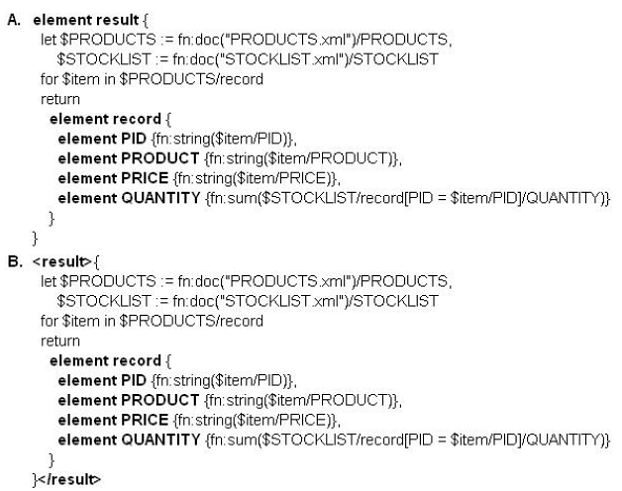
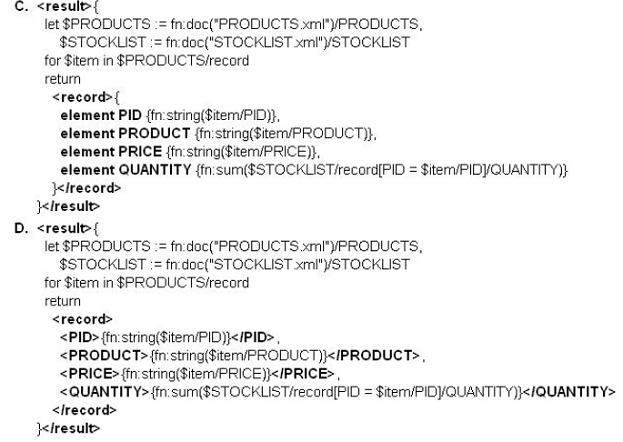
Answer : D